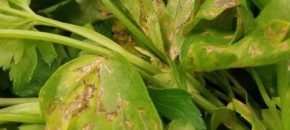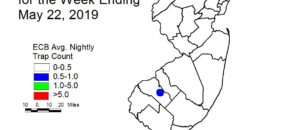Recent news about glyphosate has many thinking about alternatives. Joe Neal (Professor of Weed Science, Extension Specialist & Department Extension Leader Horticultural Science) and Andrew Senesac (Extension Weed Scientist Cornell Cooperative Exten… Read More »
Continue reading...Does My Business Need A Spotted Lanternfly Permit?
With the closing of the Purdue grain facility in Bordontown, field crops growers are sending trucks to southeastern PA to deliver grain, and produce shippers and others may be working/delivering to warehouses there too. Burlington County Agricultural Agent Bill Bamka shares the following information about shipping into or out of Spotted Lanternfly (SLF) quarantine zones […]
Continue reading...Controlling Septoria Leaf Spot and Bacterial Leaf Blight in Parsley

Septoria leaf spot (SLS) in Parsley can cause significant losses in fields where it has become established. Like other Septoria’s, the leaf spots produced on parsley look much like the leaf spots produced on tomatoes and other crops. Septoria leaf spot overwinters from year to year on infected debris so long crop rotations of 2 […]
Continue reading...IPM Update 5/22/19

Sweet Corn Low numbers of European corn borer (ECB) moths continue to be captured in a few traps (see map at left). Several cold nights may have suppressed the first flight of the season, although declining ECB populations due to transgenic corn may play a part in the low catches. Early plantings grown under plastic will be […]
Continue reading...Controlling Strawberry Fruit Rots – 2019
Fruit rots in strawberry can cause significant losses if not recognized early and controlled. The use of good cultural practices such as keeping fields weed-free and promoting good drainage, long crop rotations, and preventative fungicide applications are critical. Pathogens such as anthracnose, gray mold (Botrytis), and leather rot (Phytophthora) can become systemic problems in strawberry […]
Continue reading...Damping-off: Identifying and Controlling Early-Season Damping-off Pathogens
It is extremely important to know which pathogen is causing damping-off problems and which fungicide to properly apply. The key to controlling damping-off is being proactive instead of reactive. Always refer to the fungicide label for crop use, pathogens controlled, and application rates. Damping-off is caused by a number of important vegetable pathogens and is […]
Continue reading...